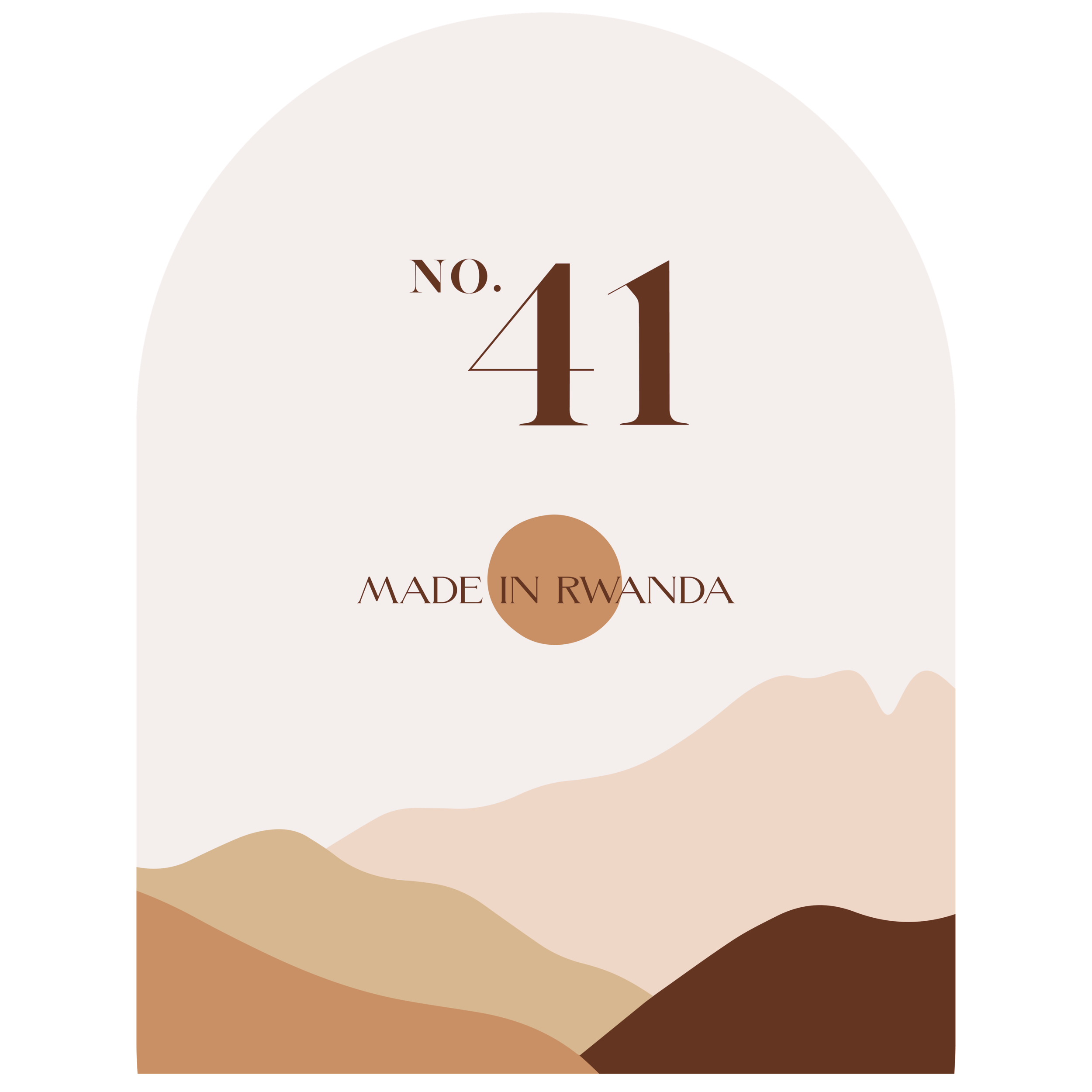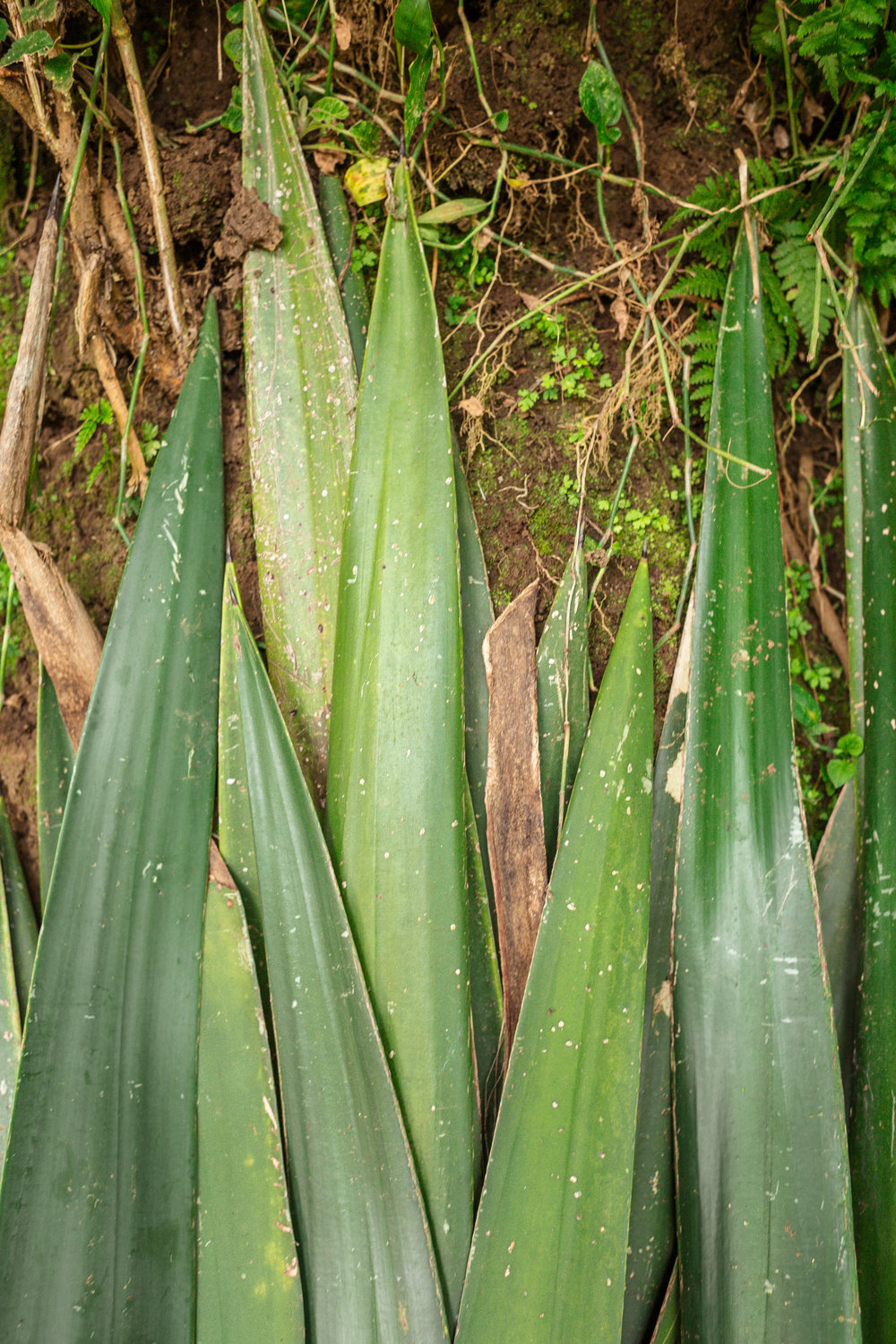How It's Made: Imigwegwe
Kagiraneza + Beatrice, husband and wife team, bringing the sisal magic
Imi...what?! Imigwegwe (emmy-gway-gway) is the Kinyarwanda word for the sisal fibers extracted from Agave leaves. Imigwegwe is used for weaving all kinds of products in Rwanda; from the cultural baskets, to traditional Intore headdresses, all the way down to, very practical, rope for livestock. "In ancient times" as JD puts it (meaning before 1990's) people would couldn't afford soap would use imigwegwe as a sort of soap, or more like an agitator, to remove dirt and 'wash' clothes.
It never occurred to me where this material came from; I mean, obviously, I knew that no one was swinging by Hobby Lobby to pick up a bag, but you just don't know what you don't know. Until you know. And I don't think I'll ever get over how much I take for granted. I was shocked and insanely impressed to learn about the actual process of taking imigwewe, from plant to product, and I thought you might be, too.
You can see these huge plants growing all over Rwanda. Literally, evvvv-erything grows here, and I mean GROWS. What we consider to be houseplants in the States, things like Fiddle Leaf Figs, Rubber Plants, and Poinsettias are massive, full-blown trees here. It's nutty. So, maybe, I just thought these were Rwanda-sized aloes or pineapple situation. Or maybe I just didn't think about it all because I never had to....
Anyway, Kagiraneza and his wife, Beatrice, are two of our newest artisan partners and I am over the moon to know them. I think the feeling might be mutual. Bea is the macrame queen and, after our first order of plant hangers, we had gone back to talk about our next production. Kagiraneza mentioned how happy they were to be working with us and how they were already planning for the future and then he pointed to this huge pile of leaves. Great big, taller than me, leaves. I asked what it was and JD explained that Kagiraneza makes all their imigwegwe, by hand, in the front yard of their home.
I mean, would you look at this guy?! Total BA. Ok, but lets start from the beginning... You don't just "pick" imigwegwe leaves, they are thick and heavy and have to be sawed off and then carried home on the head or pushed on a bike. The first thing they do is gear up because they are about to beat the tar out of these leaves. Long pants, long sleeves, rubber apron, glasses... remember they can be used as an agitator, so when it all goes flying, they don't necessarily want to get it on themselves. It can be tough to get off and very itchy.
Now, let the beat down begin. The leaf is placed on a wood stump and hit over and over with a metal pole. Kagiraneza says he uses a pole because his "stick kept breaking". Fair enough.
It doesn't take long and you can start to see the fibers. All the green starts to break away and just the stringy center remains. Once the entire length is just fibers, they shake the life of it, to get as much of the green off as possible, and then it's given a bath.
And hung in the sun to dry. To think that this is where I assumed the work started....
It's at this point that Beatrice takes over and works her magic.
It takes roughly five leaves to weave the Full Circle Planter. We are so proud to know this family and to share the story of their hard and beautiful work to support their family. Beatrice says the money that they earn insures that both of their young boys will be able to study well. Kagiraneza is planning to save money for a machine to produce even more imigwegwe so he can sell to others in his community.
Thanks for following along! xo









